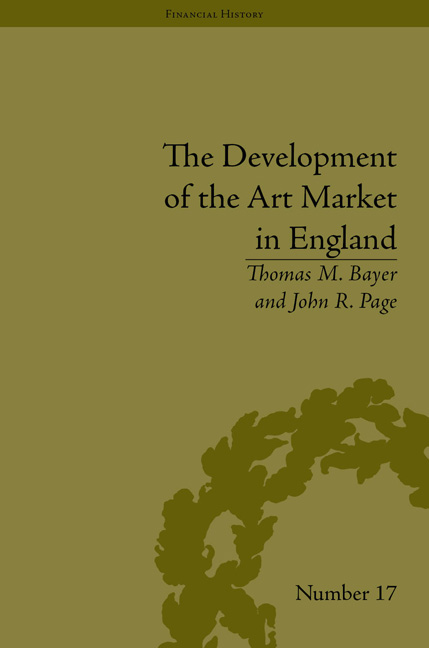Book contents
- Frontmatter
- CONTENTS
- Acknowledgements
- List of Figures and Tables
- Dedication
- Introduction
- 1 The Early Stages: From the Netherlands to Great Britain
- 2 The Commoditization of Theories of Art
- 3 The Painter as Homo Economicus
- 4 Critics and Auctions
- 5 The Evolution of Picture-Dealing
- 6 The Victorian Era
- 7 ‘Working the Oracle’: The Tools of the Trade
- 8 The Formation of a Nexus: A Story of Christie's
- 9 Commoditization and the Artist as Producer: Product Differentiation and the Domestication of Pictures
- 10 The End of the ‘Golden Age’
- 11 Postscript: A Perpetual Innovative Whirl
- Notes
- Works Cited
- Index
6 - The Victorian Era
- Frontmatter
- CONTENTS
- Acknowledgements
- List of Figures and Tables
- Dedication
- Introduction
- 1 The Early Stages: From the Netherlands to Great Britain
- 2 The Commoditization of Theories of Art
- 3 The Painter as Homo Economicus
- 4 Critics and Auctions
- 5 The Evolution of Picture-Dealing
- 6 The Victorian Era
- 7 ‘Working the Oracle’: The Tools of the Trade
- 8 The Formation of a Nexus: A Story of Christie's
- 9 Commoditization and the Artist as Producer: Product Differentiation and the Domestication of Pictures
- 10 The End of the ‘Golden Age’
- 11 Postscript: A Perpetual Innovative Whirl
- Notes
- Works Cited
- Index
Summary
The expansion of the market in contemporary and Old Master paintings that occurred in Britain during the latter half of the eighteenth century took place within a context of unprecedented economic growth, a virtual population explosion, demographic change towards greater urbanization and a general redistribution of income. These trends continued, save the occasional fluctuation, until the beginning of the 1870s. One of the pre-requisites of a boom in consumption of luxury articles is surplus consumer capital. The income-shift away from wages towards rents and profits favoured the already more affluent members of society, the middle and upper middle classes. Furthermore, Britain's industrialization had a head start and thus yielded financial benefits to England's population before other nations industrialized. ‘Art follow[ed] wealth for its rich rewards’ and, indeed, after the recovery from the 1836 to 1842 depression, London established itself as the centre of an international art market in general as well as the premier international market for contemporary art. Auction records from this period show the first significant influx of paintings by still living artists from the Continent. These records also indicate that many of the artists, whose names later became synonymous with the Victorian period, were bought as early as the 1830s by both middleclass and aristocratic buyers, suggesting that collecting habits were not predominantly defined by class.
- Type
- Chapter
- Information
- The Development of the Art Market in EnglandMoney as Muse, 1730–1900, pp. 99 - 118Publisher: Pickering & ChattoFirst published in: 2014



